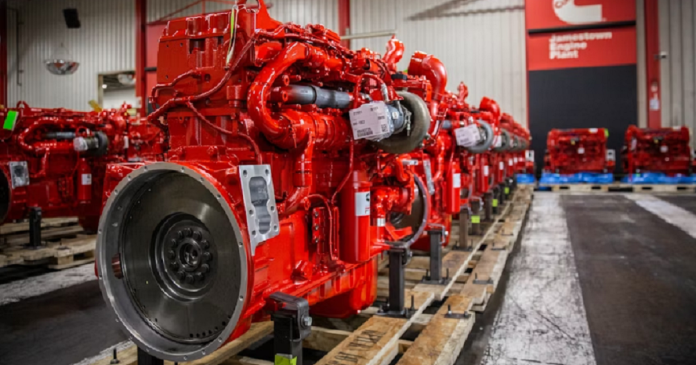Cummins has announced that the next addition to its X15 fuel-agnostic platform will be a new generation diesel engine that meets the U.S. EPA and CARB regulations for 2027. This diesel engine will complement the existing Cummins X15N natural gas engine in a product range Cummins refers to as HELM (Higher Efficiency, Lower Emissions, Multiple Fuels). This new branding, HELM, represents a shift towards more marketable names for Cummins’ fuel-agnostic engine platforms, including the B Series, X10, and X15, and signifies the company’s commitment to achieving zero emissions.
Jane Beaman, Vice President of Cummins’ Global On-Highway Business, emphasized that the HELM platform offers customers flexibility in their energy transition journey. Customers can select the fuel type that best suits their needs, their business, and their environmental goals. Cummins’ fuel-agnostic engines are designed with common components below the head gasket to reduce production costs and simplify training for technicians. However, the engine design above the head gasket varies depending on the fuel type, with each engine version operating on a single fuel type. The primary fuel options for these engines are diesel, natural gas, and hydrogen.
The upcoming advanced diesel X15 engine will provide enhanced fuel efficiency and greenhouse gas reduction while maintaining its current performance levels (up to 605 horsepower and 2,050 lb.-ft. of torque). It will also feature improved integration with powertrain components from Eaton Cummins and Cummins-Meritor. The engine’s design includes a belt-driven, high-output 48-volt alternator and an aftertreatment heater solution optimized for stringent emission standards.
Hexagon Agility, a supplier of natural gas fuel systems, has received new orders to install these systems on pilot trucks powered by Cummins’ X15N natural gas engine. The X15N is already available for order through Peterbilt and Kenworth dealerships and will be available for Freightliner trucks in 2025. The X15N, capable of up to 500 horsepower and 1,850 lb.-ft. of torque, is also the basis for a hydrogen internal combustion engine currently in development at Cummins.
Beaman highlighted the potential of hydrogen as a future fuel, acknowledging the current challenges in infrastructure development for its commercial viability. She pointed out that natural gas serves as a transitional fuel towards hydrogen, although it also faces some infrastructure hurdles, such as the need for more fueling stations.
Brett Merritt, president of Cummins’ Engine Business, noted that despite the growing focus on zero-emission solutions like battery electric, diesel and natural gas engines will continue to be the primary means of propulsion for the foreseeable future.















